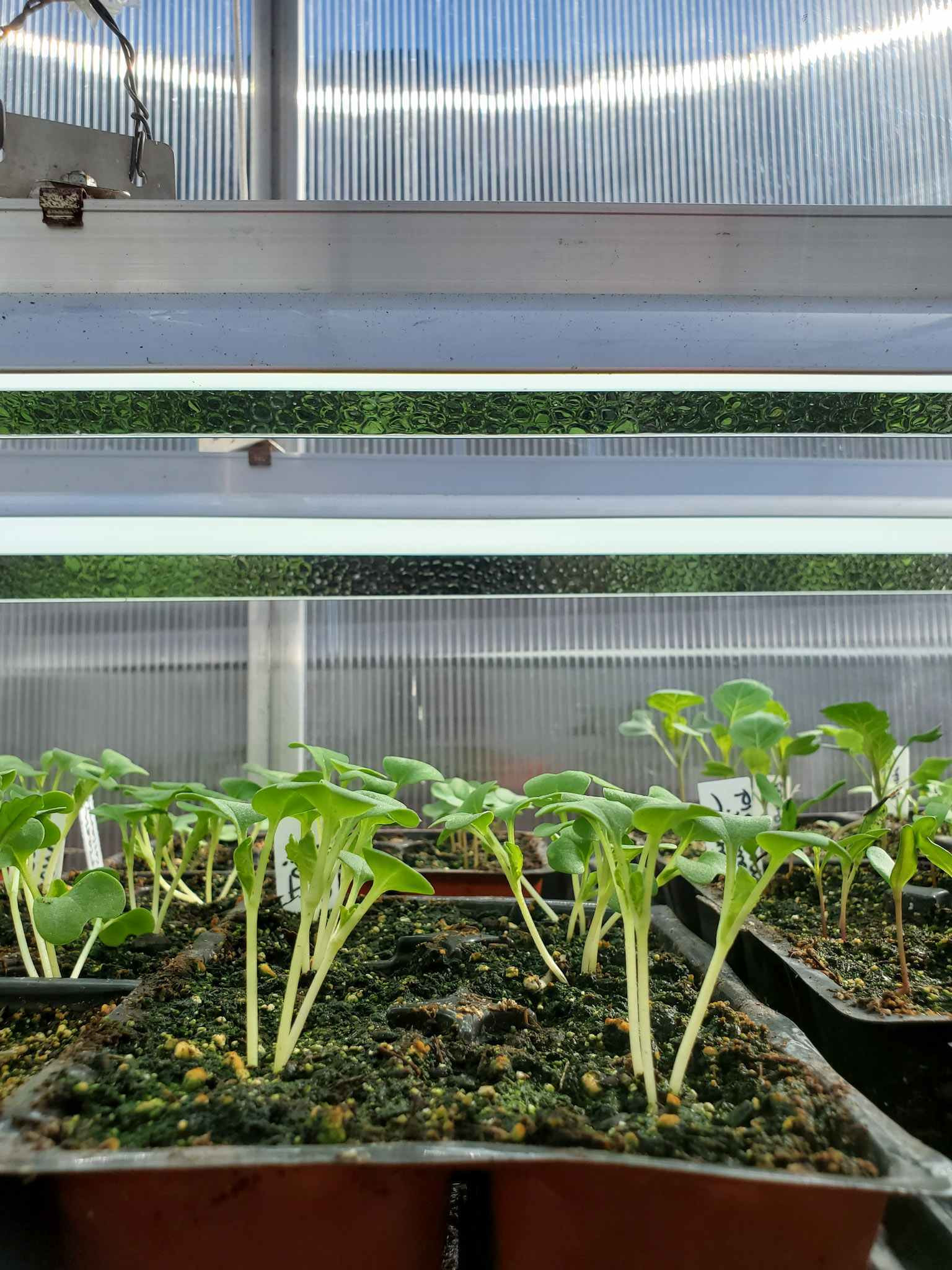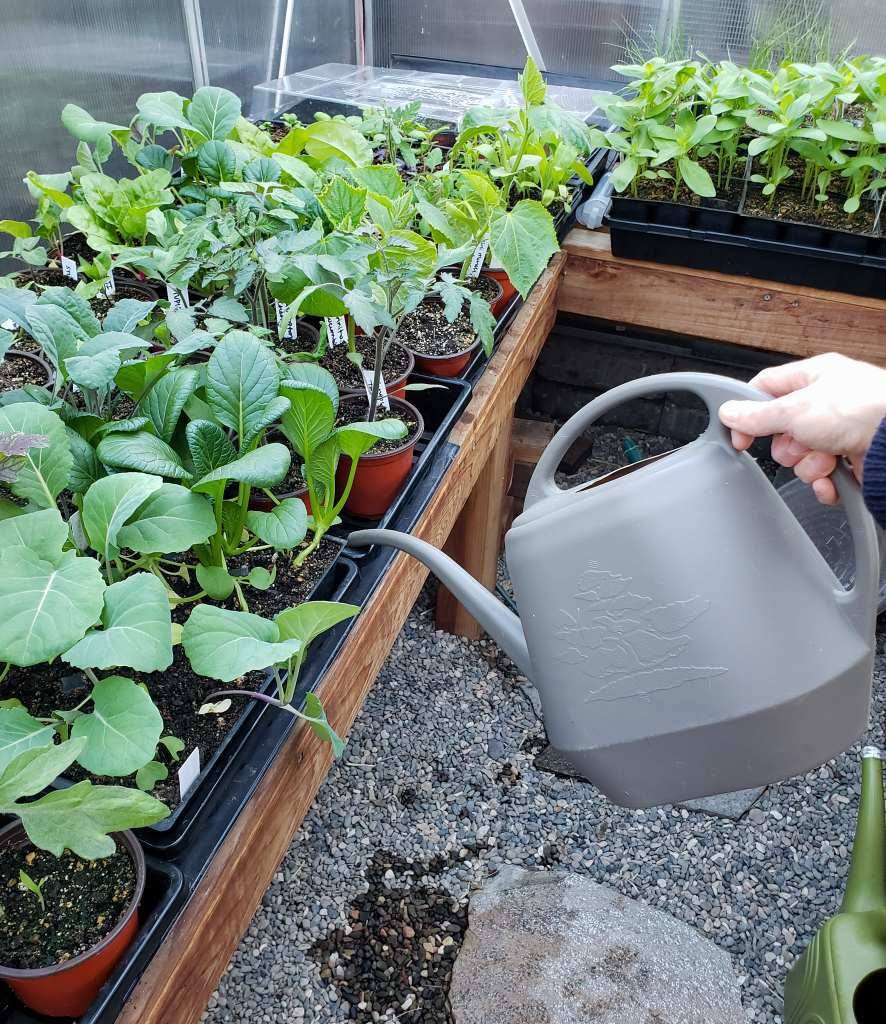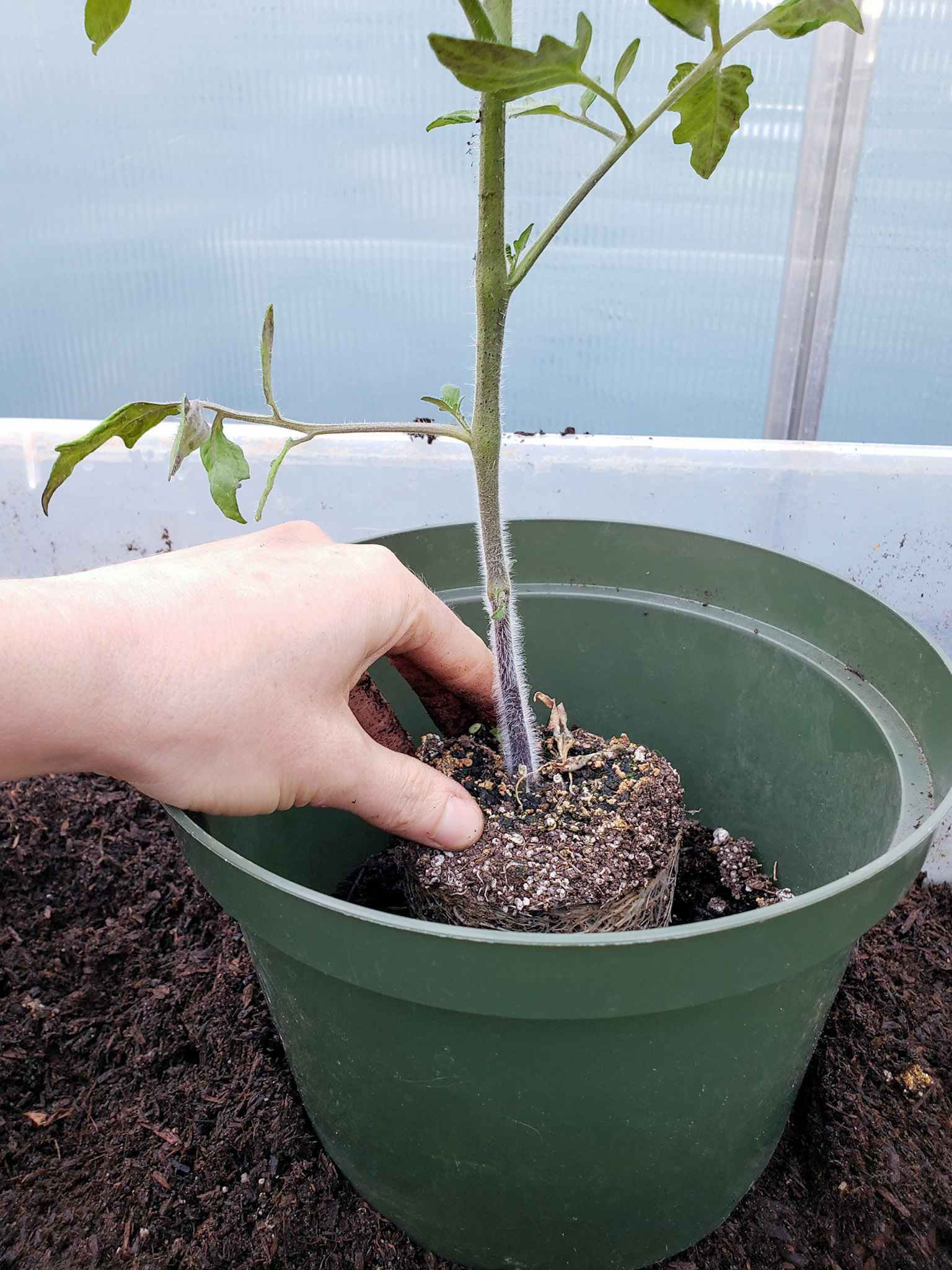Are your seedlings stretching skyward like they’re reaching for the stars, but looking a little weak and pale? Leggy seedlings can be a common issue, but don’t worry, savewhere.net is here to help you cultivate healthy, robust plants without breaking the bank. We’ll show you proven methods to rescue your leggy seedlings, prevent future issues, and maximize your gardening budget, plus discover cost-effective solutions, budget-friendly gardening tips, and resourceful plant care.
1. What Are Leggy Seedlings And Why Should You Care?
Leggy seedlings are characterized by their excessively tall, thin, and weak stems relative to their size. Instead of developing a sturdy base, they prioritize upward growth in search of light, leading to instability and increased vulnerability.
These seedlings are typically fragile, pale, and may even lean towards the nearest light source.
Why Are Leggy Seedlings Problematic?
Leggy seedlings are more than just an aesthetic issue; they present several challenges:
- Weakness: Thin stems are prone to bending, breaking, and toppling over, hindering their development.
- Increased Risk of Disease: Leggy seedlings are more susceptible to “damping off,” a fungal disease that causes them to wilt and collapse at the soil line.
- Reduced Yield: Stressed and weakened seedlings often result in lower yields and less productive plants.
Think of it like trying to build a skyscraper on a toothpick foundation – it’s simply not sustainable.
 Comparison of leggy and healthy bok choy seedlings, highlighting the difference in stem length and overall robustness.
Comparison of leggy and healthy bok choy seedlings, highlighting the difference in stem length and overall robustness.
Is There a Standard Definition for “Leggy”?
There isn’t a strict height limit; it’s more about comparing your seedlings to what’s considered normal for that particular variety when grown in ideal conditions. Experienced gardeners develop an eye for spotting leggy growth early on.
2. What Causes Seedlings to Become Leggy?
The primary culprit behind leggy seedlings is insufficient light. This can be due to several factors:
- Inadequate Light Intensity: A sunny windowsill often isn’t enough, especially during shorter days.
- Insufficient Light Duration: Seedlings need at least 12-16 hours of light per day.
- Excessive Distance from Light Source: Even strong grow lights can be ineffective if placed too far from the plants.
The Science Behind the Stretch
Plants use light to fuel photosynthesis, the process of converting light energy into chemical energy for growth. When light is limited, seedlings prioritize stem elongation to reach available light, resulting in the characteristic “leggy” appearance.
Other Contributing Factors
While light is the main factor, other conditions can exacerbate legginess:
- High Temperatures: Warm temperatures can accelerate growth, making the need for adequate light even more critical.
- Overcrowding: Seedlings competing for light in a crowded tray will stretch upwards.
3. Identifying the 5 Key User Search Intents
Understanding what users are really looking for when they search “How To Save Leggy Seedlings” is crucial for providing relevant and helpful content. Here are five key search intents:
- Problem Identification: Users want to confirm if their seedlings are indeed leggy and understand the potential consequences.
- Cause Analysis: Users want to know why their seedlings became leggy in the first place to prevent future occurrences.
- Immediate Solutions: Users seek actionable steps to stop the legginess from worsening.
- Rescue Strategies: Users want to learn how to strengthen and rehabilitate existing leggy seedlings.
- Long-Term Prevention: Users look for strategies to avoid leggy seedlings in future plantings.
4. Proven Methods To Prevent Leggy Seedlings From The Start
Prevention is always better than cure. Implementing these strategies from the beginning can significantly reduce the risk of leggy seedlings:
4.1. Provide Ample Light Immediately
The moment your seeds germinate, they need bright light. Even a short period in darkness can trigger irreversible legginess.
4.2. Invest in Supplemental Grow Lights
Relying solely on natural light from a window is rarely sufficient, especially during the shorter days of early spring.
Consider these options:
-
Fluorescent Grow Lights: A budget-friendly option, ideal for beginners.
-
LED Grow Lights: More energy-efficient and longer-lasting than fluorescent lights, though they have a higher initial cost.
According to research from the U.S. Department of Energy, LED grow lights consume up to 75% less energy and can last up to 50,000 hours longer than traditional incandescent bulbs.
-
Placement is Key: Position the lights just a few inches above the seedlings, adjusting as they grow.
 Seedlings under T5 fluorescent grow lights, demonstrating the correct distance for optimal growth.
Seedlings under T5 fluorescent grow lights, demonstrating the correct distance for optimal growth.
4.3. Light Timing Is Critical
Seedlings require 14-16 hours of light per day. Using a simple light timer ensures consistent light exposure, even when you’re not around.
4.4. Remove Germination Covers Promptly
Humidity domes are great for seed germination, but they should be removed as soon as the seedlings emerge to allow for adequate light exposure.
4.5. Consider Outdoor Direct Sowing
If weather permits, direct sowing seeds outdoors in a sunny location can eliminate the risk of legginess associated with indoor starting.
5. Actionable Steps To Correct Or Fix Leggy Seedlings
So, you’ve got leggy seedlings. Don’t despair! Here’s how to help them recover:
5.1. Maximize Light Exposure Immediately
If you’re not already using a grow light, add one immediately. If you have a grow light, consider upgrading to a stronger one or lowering it closer to the seedlings.
5.2. Control The Heat
If you’re using a heat mat, turn it off or down. While warmth speeds up germination, it can also exacerbate legginess in seedlings that aren’t getting enough light.
5.3. Don’t Be Afraid To Start Over
If your seedlings are only a few days old and already quite leggy, it might be best to start a new batch. This is especially true if you have plenty of seeds and can quickly replant.
5.4. How To Strengthen Leggy Seedlings
Even if they’re a bit stretched, you can still make your seedlings stronger and more likely to thrive.
-
Thin Seedlings: Give each seedling enough space to avoid competing for resources.
-
Add Movement: Use an oscillating fan to gently blow on the seedlings. This helps them develop stronger stems. You can also gently brush them with your hand a few times a day to achieve the same effect. According to a study published in the Journal of Plant Growth Regulation, mechanical stimulation (like wind or touch) can increase stem thickness and reduce plant height in seedlings.
-
Use Mild Fertilizer and “Water from Below”: Once seedlings have their first true leaves, feed them with a diluted liquid fertilizer. Watering from below encourages strong root growth and prevents damage to delicate stems.
 Watering seedlings from below in a greenhouse setting.
Watering seedlings from below in a greenhouse setting.
5.5. Don’t Skip Hardening Off
Before transplanting your seedlings outdoors, you need to “harden them off.” This means gradually exposing them to outdoor conditions over a week or two, which helps them adjust to sunlight, wind, and temperature changes.
6. Potting Up Or Planting Leggy Seedlings: The Deep Burial Technique
One of the most effective ways to deal with leggy seedlings is to bury their stems deeper when potting them up or transplanting them into the garden.
6.1. Can You Really Bury Leggy Seedlings Deeper?
Yes, in most cases. Burying the stem provides additional support and encourages the plant to develop roots along the buried portion, leading to a stronger, healthier plant.
However, it’s important to wait until the seedlings are a few weeks old and have been strengthened using the methods described above. Burying very young, weak stems can lead to rot.
6.2. How Deep Is Too Deep?
This depends on the type of plant.
-
Tomatoes and Tomatillos: These are the superstars of deep planting. You can bury them up to their first set of leaves because they readily grow new roots from their stems. According to the University of New Hampshire Extension, burying tomato seedlings deeply results in a larger root system and increased nutrient uptake.
-
Peppers and Brassicas (Kale, Broccoli, Cabbage): Bury these up to their first set of true leaves.
-
Lettuce, Bok Choy, Cabbage, Kohlrabi: Plant these so that the stem is buried up to the point where the head or bulb will form, providing support.
-
Eggplant, Squash, and Cucumber: These are more susceptible to rot, so bury them minimally, if at all.
6.3. Step-by-Step Deep Planting Guide
- Gently remove the seedling from its container.
- Dig a hole deep enough to bury the stem to the appropriate depth.
- Carefully place the seedling in the hole, ensuring the leaves are above the soil surface.
- Backfill the hole with soil, gently firming around the stem.
- Water thoroughly.
 Potting up a leggy tomato seedling and burying the stem deeper.
Potting up a leggy tomato seedling and burying the stem deeper.
7. Frequently Asked Questions (FAQ) About Saving Leggy Seedlings
- Q1: What are the signs of leggy seedlings?
- Tall, thin stems, pale color, and leaning towards light sources are key indicators.
- Q2: Can leggy seedlings recover?
- Yes, with proper care, including increased light and support, they can often thrive.
- Q3: Is it better to start over with new seeds if seedlings are leggy?
- If caught early and you have plenty of seeds, it can be a faster solution.
- Q4: How much light do seedlings need to prevent legginess?
- Aim for 14-16 hours of bright light per day.
- Q5: Can I use regular household lights for seedlings?
- While better than nothing, they lack the specific wavelengths needed for optimal growth.
- Q6: What type of fertilizer is best for leggy seedlings?
- A diluted liquid fertilizer, such as seaweed extract or fish emulsion, is a good choice.
- Q7: How does a fan help leggy seedlings?
- It strengthens stems by simulating wind and improving air circulation, reducing disease risk.
- Q8: Can I plant all types of leggy seedlings deeper in the soil?
- No, some are more susceptible to rot, so research specific plant needs.
- Q9: What is hardening off, and why is it important?
- It’s gradually acclimating seedlings to outdoor conditions, crucial for their survival.
- Q10: Where can I find affordable gardening supplies to prevent leggy seedlings?
- Visit savewhere.net for deals on grow lights, timers, and other essential supplies.
8. Why Choose Savewhere.net For Your Gardening Needs?
At savewhere.net, we understand the importance of saving money while pursuing your passions. We provide:
- Expert Advice: Our team of experienced gardeners offers practical tips and solutions for common gardening challenges.
- Curated Deals: We scour the web for the best prices on gardening supplies, helping you save money without sacrificing quality.
- Community Support: Connect with other gardeners, share your experiences, and learn from each other.
9. Real-Life Example: Rescuing Leggy Tomato Seedlings in Atlanta, GA
Let’s say you’re in Atlanta, GA, and you started your tomato seedlings indoors in early March. Despite your best efforts, they’ve become leggy due to inconsistent sunlight. Here’s how you can apply the techniques we’ve discussed:
- Invest in a Grow Light: A simple LED grow light from a local hardware store or online retailer can provide the necessary supplemental light.
- Deep Planting: When transplanting the seedlings into larger pots, bury the stems deeply, leaving only the top few leaves exposed.
- Harden Off Gradually: As the weather warms up in April, gradually expose the seedlings to outdoor conditions before planting them in your garden.
10. The AIDA Model: Inspiring Action in Gardeners
This article has been crafted using the AIDA model to guide you from initial awareness to taking action:
- Attention: We grabbed your attention with a relatable problem – leggy seedlings.
- Interest: We sparked your interest by explaining the causes and consequences of legginess.
- Desire: We created a desire for healthy, robust seedlings by presenting actionable solutions.
- Action: We encourage you to visit savewhere.net for deals on gardening supplies and connect with our community.
Don’t let leggy seedlings discourage you from pursuing your gardening dreams. With the right knowledge and tools, you can cultivate thriving plants and enjoy the fruits (and vegetables) of your labor.
Visit savewhere.net today to discover more tips, tricks, and resources for thrifty gardening in the USA. Address: 100 Peachtree St NW, Atlanta, GA 30303, United States. Phone: +1 (404) 656-2000. Website: savewhere.net. Let’s grow together.
